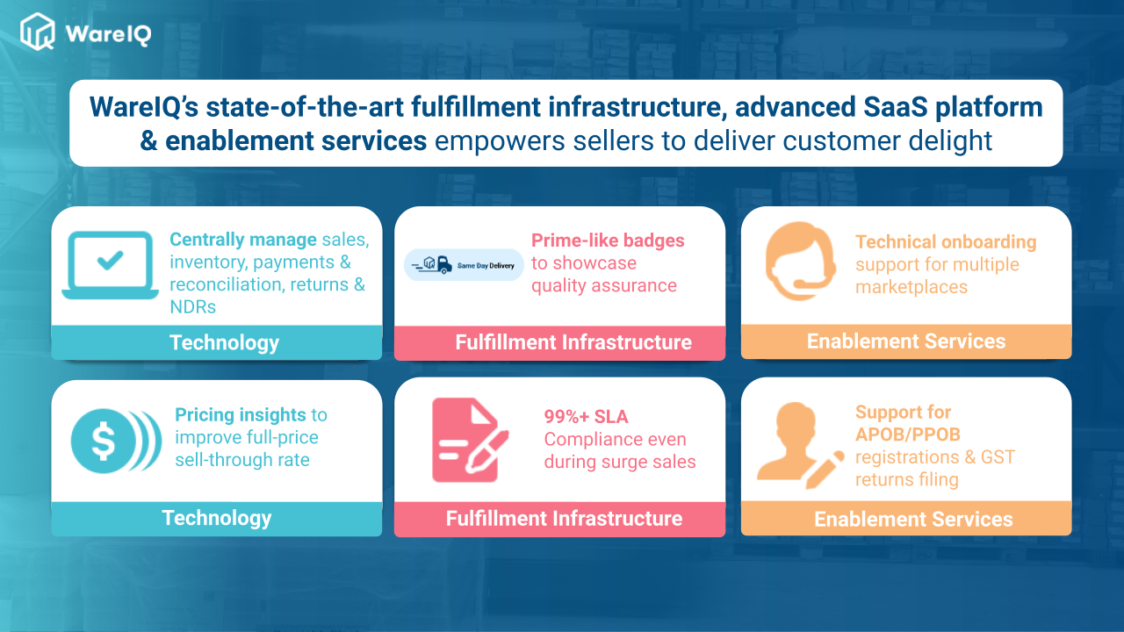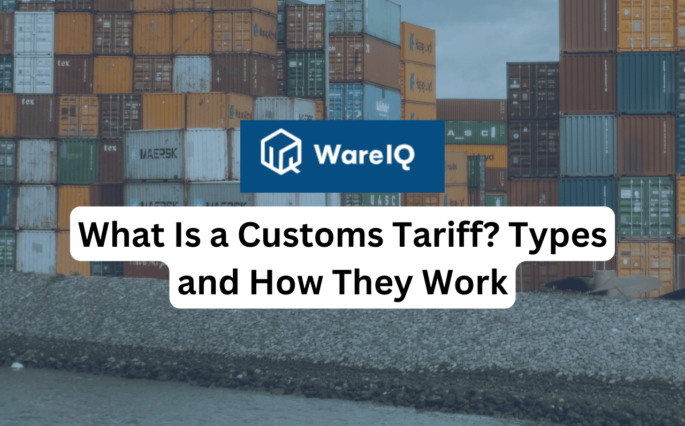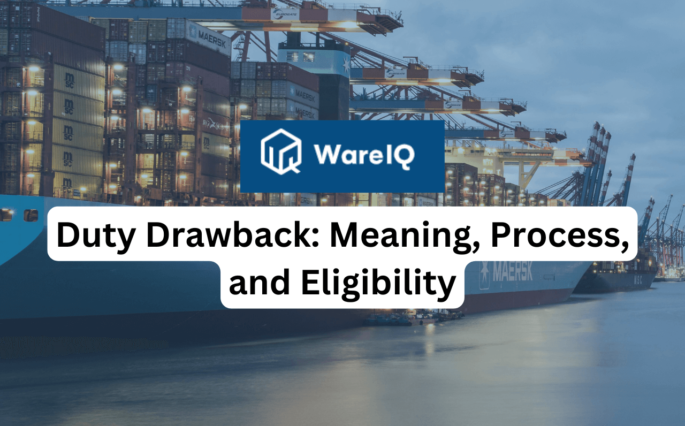Shipping Date & Delivery Date: Definitions, 4 Key Differences & 7 Important Factors Affecting These Dates in 2025

After order confirmation, an eCommerce platform’s customers lookout for one critical piece of information: when will they receive their package? And that depends on when the order is shipped which is officially referred to as the shipping date.
However, the date of shipping is not the same as the date of order placed or the estimated delivery date. Let’s understand how.
- What is a Shipping Date?
- What is a Delivery Date?
- 6 Important Terms Related to Shipping Date & Estimated Delivery Date
- 7 Important Factors Affecting Shipping Dates in 2025
- Which Factors Should be Considered While Calculating the Estimated Delivery Date?
- 4 Differences Between Estimated Shipment Date and Estimated Delivery Date
- Conclusion
- Shipping Date FAQs
What is a Shipping Date?
As the name suggests, the shipping date is when an eCommerce company hands over an order to the carrier for delivery to the customer, which is the day that the shipment leaves the warehouse.
The transit time is calculated from the date of shipping. For instance, if the shipment takes two days to reach the customer and leaves the eCommerce company’s warehouse on the present day, it then becomes the shipping date. The next important tracking date is the estimated delivery date.
WareIQ, an eCommerce fulfillment company, empowers online brands with a superior-tech platform to compete with Amazon like service levels by bringing their average delivery timelines from 5-10 days to 1-2 days.
What is a Delivery Date?
The estimated delivery date is the day that the order reaches the end customer. Providing this information is crucial because most customers confirm the order only when they agree with the estimated delivery date. If an online retailer takes more than the desired time to deliver a shipment, the customers often abandon the cart. And if they are okay with the estimated delivery date, they check for status updates frequently.
6 Important Terms Related to Shipping Date & Estimated Delivery Date
Every discussion on shipping dates and estimated delivery dates contains a few unique terms. Below is a list of the most common ones:
Order Date
It is the date on which a customer confirms an order on an eCommerce website. It could be a pre-paid or COD order. This date triggers the retail logistics process for the shipment. It is when the product usually gets picked up by the seller. Most companies push for same-day pickup. But timelines can change if the customer places the order late at night or at some other odd hour.
However, an order date could be different from the shipping date. Many companies don’t ship on public holidays or have shipping cut-off times. People can view the shipping notifications in their track your order section.
Invoice Creation Date
It is the date on which an invoice is generated. Invoices are documents containing critical information about the purchase that enables the online retailer to receive their payment. Invoices generally include the following details:
- Ordered products and their costs
- Total amount due, including taxes
- Seller and customer’s information
- Payment information, including the method of the transaction
- Delivery details
Estimated shipping date
This is the expected date that the order will leave the warehouse or fulfillment center and the shipping process gets initiated. It depends on:
- Time of order placement: If the customer confirms an order at 11 pm instead of 11 am, it can add a whole day for the pickup.
- Shipping cut-offs: Every company has their shipping cut-offs, which usually fall late in the evening and maybe over weekends and public holidays. An order cannot be pushed out of the seller’s warehouse if placed after the shipping cut-off.
Some companies display their shipping cut-off timings on the checkout page. Statements like “Orders placed after 6 pm IST will be shipped the next day.” condition the customer on when they can expect to receive the order.
- Other factors: Many factors like public and bank holidays and strikes often cause a transport stall and affect the estimated date.
You May Like: These Shipping companies in India offer the best in market services.
Estimated Delivery Date
Estimate delivery date refers to the expected timeline for delivery. The estimated delivery date is the date on which customer can expect to receive their order. The checkout counter displays this date and deeply affects the customers’ reaction to the delivery process. Longer estimated delivery dates often lead to cart abandonment.
This date gets depicted as a window between two dates such as June 1-3rd. Like the date of shipping, the estimated delivery date depends on various factors. The time of order confirmation and elements such as public holidays or national strikes affect the delivery. Moreover, since the carrier takes charge of delivery, their performance affects the distribution timelines. Any lag in their transportation cycle can push the estimated delivery date even further.
Shipping Speed
It is not the velocity, but the time it takes for a carrier to deliver the order to the customer. It describes a couple of things:
- The time duration for delivery such as 3-5 business days
- The shipping method such as express or standard delivery
The shipping speed is also affected by carrier performance and environmental influences, including political and economic scenarios. For international shipments, the regulations affect the shipping speed. For example, if the consignment gets stuck in customs for days, the shipping speed reduces, and delivery timelines expand. Plus, many customers agree to pay more to enhance the shipping speed. There are certain sellers and platforms providing free shipping options too.
Return date
When a customer is unhappy with the product, they place a request to return it to the seller within a set timeframe, which is also known as Return to Origin (RTO). The carrier collects the shipment from the customer and returns it to the eCommerce company’s warehouse or directly to the seller. The return date is the day on which the specified items return to the origin.
It is different from the return window, which is the timeframe given to customers to place the return request. For instance, products with a 30-days return policy are eligible for return to the seller within 30 days of delivery to the customer.
You May Like: Reverse logistics Companies in India offering faster returns.
7 Important Factors Affecting Shipping Dates in 2025
Shipping Dates are timeframes that can be affected by a variety of external influences. Here’s a list of major factors for 2025 that impact its calculation:
Lead Time
It is the time between order placement and the shipping date. It depends on the type of product ordered. Lead or production times for products that are ready to be delivered are shorter than those that need manufacturing or assembly before shipping.
Backorders, inventory shortages, or issues in procuring raw materials for a large number of orders affect the readiness of the final product and hence the date of shipping.
Shipping Cut-Offs
Also called cut-off fulfillment timelines, shipping cut-offs also include inventory procurement or manufacturing timelines for every order placed before shipping. It can specify the time of day or the actual dates. For instance, production for orders placed on December 25th will resume on January 2nd.
Manpower Availability
There are various steps involved before the order is ready for shipping. The absence or inadequacy of the workforce leads to delays in order processing which also affects it.
Transit Time
The time spent in transit affects the shipping date. It depends on the carrier, their performance, the shipping mode (express or standard), mode of transport, and the destination.
Natural Disturbances
Sudden weather changes can disrupt transportation causing the shipment to sit idle in the warehouse. For example, heavy rainfalls cause significant traffic jams, and heat or cold waves can cause health issues among delivery personnel. Ultimately, these disturbances can lead to delayed shipping dates.
Regulations
When inventory needs to be procured from another state or country, the domestic and international regulatory authorities influence the rolling out of the shipment from the seller’s location. And if the load needs to go through layers of regulatory procedures before reaching the customer, the shipping date needs to be preponed to ensure timely delivery.
For example, if a shipper needs to expedite a shipment that needs to leave India and reach the customer in the US ten days later, the seller will have to keep some buffer to successfully clear international customs which affects the shipping date.
Political and Economic Scenarios
This scenario at either the origin, destination, or both can affect the shipping date. Moreover, any local or public holidays, people protesting on roads, and union strikes affect the distribution and ecommerce shipping timeline.
For instance, if the destination faces disruption due to political activity, order shipping from the warehouse will have to be stalled, thus delaying the date of shipping.
Which Factors Should be Considered While Calculating the Estimated Delivery Date?
The estimated delivery date depends on the following factors:
- Origin and Destination: The further away from the destination, the longer it takes to get the shipment to the customer’s doorstep.
- Route Condition: For instance, if an order needs to reach a tier 4 town from Mumbai, the estimated delivery date depends on the number of tolls and road conditions.
- Product Details: Large quantities take more time to deliver. Plus, inventory procurement from afar leads to delayed timelines.
- Average Transit Time: The transit duration for previous similar orders fulfilled by logistics companies should be calculated to get a better idea of the estimated delivery date.
- Estimated Shipping Date: Delivery depends on when the order gets shipped from the warehouse. Any delay there snowballs into delayed delivery to the end customer. It also means the ESD has an impact on the delivery date.
- Shipping Mode: Express and standard modes offer different delivery timelines. The option selected by the customer decides how fast the delivery will occur.
4 Differences Between Estimated Shipment Date and Estimated Delivery Date
| Estimated Ship Date | Estimated Delivery Date |
|---|---|
| This is a company's best guess regarding the date by when the shipment will leave its warehouse or storage location. | This is a company's expectation of when the order will reach the final customer. |
| It is the approximate date by when the shipment gets handed over to the carrier for transport to the customer. | It is the approximate date by which a customer receives their order. |
| It depends on lead and processing time, inventory availability and the workforce presence for processing the order. | It depends on the estimated shipping date and the factors influencing the safe transportation of the product to the customer. |
| It is not displayed at the time of online purchase and hence, it doesn't influence the customer's purchase decision. | It must be displayed at the order checkout and influences customers' purchase decisions and cart abandonment rates. |
Conclusion
Estimates run businesses. And estimated shipping and delivery dates decide how well companies can serve their customers. So these two figures are a yardstick to measure a business’s performance. They ascertain the success rate of an enterprise. So it is beneficial for a business to have an accurate idea of shipping dates and delivery timelines. This can be done with a 3PL company like WareIQ.
Not only do we provide services across the entire range of fulfillment requirements, but we also help businesses provide better and more accurate shipping services to their customers by being a shipping aggregator and by having state-of-the-art software solutions that help businesses estimate shipping and delivery dates accurately.

- Pan India Fulfillment & Darkstore Network: Plug-and-play fulfillment infrastructure with no minimums, which is compliant with Amazon Seller Flex, Flipkart Assured, Myntra and other marketplaces
- Inventory & Network Planning Excellence: Best-in-class AI models for sales forecasting, product segmentation, and inventory management to reduce inventory by 40% and increase revenue by 10%.
- Vertically Integrated Fulfillment Tech Stack: Our Fulfillment Tech Solution supports integrations with 20+ top marketplaces & D2C platforms, and prominent national, regional and hyperlocal couriers, enhancing reach by covering deliveries for 27,000+ pin codes
- Supply Chain Productivity Applications: Integrate a host of supply chain productivity apps with a single-click to your existing CRMs, ERPs & accounting software to manage your logistics workflows from one command center. Use Apps like RTO Shield to get 100% RTO protection, Branded Tracking to turn your order tracking page into a profitable marketing channel, and many more.
Trusted by 300+ top Indian brands, we are helping them accelerate online sales and expedite their growth through a synergistic combination of advanced technology, robust fulfillment infrastructure & seller enablement services!WareIQ is backed by leading global investors including Y Combinator, Funders Club, Flexport, Pioneer Fund, Soma Capital, and Emles Venture Partner.







